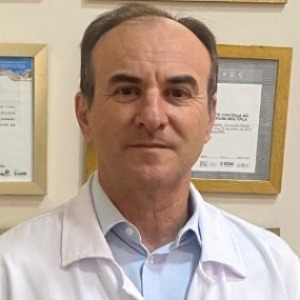Thalamus
The thalamus is a small structure located within the brain that serves as the primary gateway for sensation and motor signals that travel to the cortex. It plays critical roles in relaying sensory information, as well as forming part of the brain’s circuitry for generating sleep and alertness. The thalamus is composed of two egg-shaped masses of gray matter, which are covered by a thin layer of white matter. Each mass is divided into two major nuclei (the ventral, or lower division, and the dorsal, or upper division) with specialized cell types that form intricate networks. These cells not only send and receive signals from other parts of the brain but also process and relay the signals through a range of different pathways. The most function of the thalamus is to mediate the flow of information between the cortex and the rest of the nervous system. For example, it receives sensory inputs from the body’s peripheral nerves and relays them to the corresponding area of the cortex for further processing. The thalamus also participates in movement control, in which the basal ganglia and cerebellum provide signals to the motor cortex through the thalamus as part of the so-called indirect pathway. On a larger scale, information from the thalamus combines with other inputs from structures such as the hippocampus and amygdala to provide higher-order processing and integration. This allows it to play a crucial role in cognitive functions such as memory, emotion, and decision-making. While the thalamus is located deep within the brain, its actions are widely felt throughout the body. In addition to its roles in cognition and movement, emerging research suggests that some thalamus-mediated mechanisms may also be involved in diseases associated with sleep disturbances. These include circadian rhythm disorders, narcolepsy, and Parkinson’s disease, all of which are characterized by irregularities in sleep pattern regulation. Therefore, understanding of the thalamus’s role in controlling the body’s sleep-wake cycle may provide insights into potential treatments for such disorders. The thalamus is an integral part of the brain’s circuitry and plays many crucial roles in the regulation of sensory input, movement, cognitions, and behavior.

Ken Ware
NeuroPhysics Therapy Institute, Australia
Robert B Slocum
University of Kentucky HealthCare, United States
Yong Xiao Wang
Albany Medical College, United States
W S El Masri
Keele University, United Kingdom
Jaqueline Tuppen
COGS Club, United Kingdom
Milton Cesar Rodrigues Medeiros
Hospital Santa Casa de Arapongas, Brazil




Title : Perception and individuality in patient cases identifying the ongoing evolution of Myalgic Encephalomyelitis/Chronic Fatigue Syndrome (ME/CFS)
Ken Ware, NeuroPhysics Therapy Institute, Australia
Title : Narrative medicine: A communication therapy for the communication disorder of Functional Seizures (FS) [also known as Psychogenic Non-Epileptic Seizures (PNES)]
Robert B Slocum, University of Kentucky HealthCare, United States
Title : Personalized and Precision Medicine (PPM), as a unique healthcare model through biodesign-driven biotech and biopharma, translational applications, and neurology-related biomarketing to secure human healthcare and biosafety
Sergey Victorovich Suchkov, N.D. Zelinskii Institute for Organic Chemistry of the Russian Academy of Sciences, Russian Federation
Title : Neuro sensorium
Luiz Moutinho, University of Suffolk, United Kingdom
Title : Traumatic Spinal Cord Injuries (tSCI) - Are the radiologically based “advances” in the management of the injured spine evidence-based?
W S El Masri, Keele University, United Kingdom
Title : Scalp acupuncture with functional electrical stimulation for the treatment children with autism spectrum disorder
Zhenhuan Liu, Guangzhou University of Chinese Medicine, China